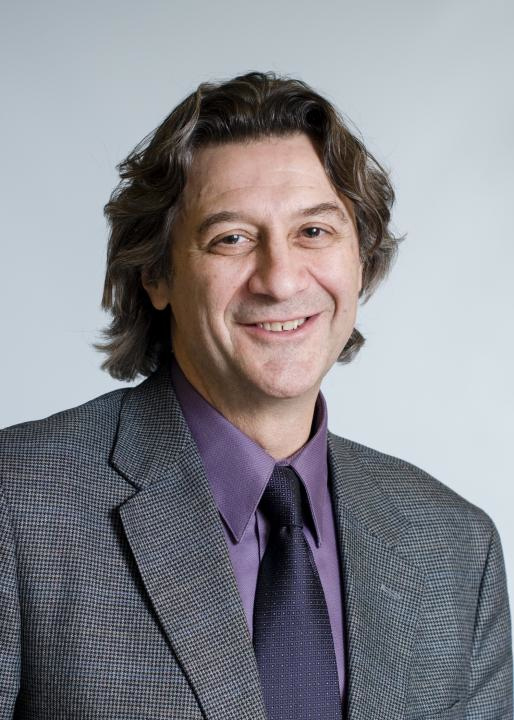Share This
Two decades ago, almost no one in the world had heard of celiac disease or gluten, while today both these terms are mainstream, in large part thanks to one man: Dr. Alessio Fasano.
His outsize role in fostering understanding of celiac disease, which affects about 1% of the world’s population, was highlighted recently at a celebration of the 20th anniversary of the Center for Celiac Research and Treatment run by Dr. Fasano. Key Fasano milestones include:
- The discovery of zonulin, a human protein that affects intestinal permeability. In a healthy body, zonulin is a gatekeeper, maintaining what are known as “tight junctions” in the intestinal wall. When zonulin fails, a condition popularly referred to as “leaky gut” develops, allowing other proteins (including gluten and certain allergens) to escape the gut, causing inflammation and other problems in the body.
- The first study, in 2003, showing how widespread celiac disease actually is in the USA. Dr. Fasano and his team painstakingly performed blood tests on 13,145 people around the country, showing that .7% of those tested had celiac disease – a stunning 35 times higher than the previous rough estimate of .02%. Before this study, celiac disease – though prevalent in Europe – was thought to be rare in the U.S., so few resources for diagnosis and treatment existed.
- A landmark study, in 2007, documenting the level of gluten contamination likely to be safe in “gluten-free” foods. Frustrated by FDA delays in setting guidelines for gluten-free labeling, Dr. Fasano’s team established that levels under 20 parts per million would be okay — work that led to clear FDA labeling guidelines after 10 years of inaction. To do this, they had to convince celiac patients thriving on a gluten-free diet to ingest different levels of gluten – a persuasion challenge that likely hinged on Fasano’s charisma and very evident dedication to his patients. (At one point in the evening he said, “Sometimes I just listen to a patient rant for 50 minutes, and that is a healing process in itself.”)
Though he played a central role in such key discoveries, Alessio Fasano, in his signature unassuming, wise-cracking way, constantly deflects credit to others. At the event’s symposium in the historic Ether Dome, he credited others in the celiac research community (including Ciarán Kelly, Carlo Catassi, and Detlef Schuppan); at dinner he thanked his 50-person laboratory, his colleagues, his patients, and others in the celiac support community; and at the reception, he even dragged the musicians back as they attempted to slip quietly through the door, and made sure they got recognized. Maybe the fact that he works primarily with kids keeps him grounded and fosters that playful side of his personality.
Dr. Fasano is aware that his work rests on the shoulders of many. He and others at the anniversary event reminded us of the checkered history of our understanding of celiac disease, starting two thousand years ago when Aretaeus of Cappadocia first recounted the symptoms. The name celiac (or coeliac) disease was coined in 1888, by a London doctor who prescribed a diet of “ass’s milk, rusks, and thin bread toasted on both sides” – clearly not a recipe for a gluten-free diet. It wasn’t until the 1940s that Dr. Willem-Karel Dicke discovered the role of gluten found in wheat, rye and barley, in celiac disease. He noted that children known to have the disease suddenly began to thrive during World War II, when bread was unavailable in the Netherlands, and made the crucial connection.
Things sped up quickly about the time Dr. Fasano started his Center for Celiac Research in Maryland in 1996. Back then, he reminisced, “doctors couldn’t spell celiac, there were only two labs in the whole country testing for celiac, and we thought genes were destiny. Twenty years later, everybody knows celiac disease, there are more than a hundred testing labs, and we’ve proven that gene expression can make your genes go either way.” Along the way, in 1997, another foundational discovery established a simple blood test (for a factor called Tissue Transglutaminase, or tTG) to screen for celiac disease. It was this blood test that made Fasano’s 2003 screening of 13,145 people possible.
While giving nod to the past, the Center for Celiac Research anniversary event set its sights firmly on the future. Alessio Fasano and the Boston research consortium he’s been part of since moving the Center to Massachusetts in 2013 have lofty goals for what’s next. Specifically, they aim to:
- Close the gap in diagnosis of celiac disease
- Increase access to care for people with celiac disease
- Develop other treatments besides the gluten-free diet (which many patients find intolerable)
- Find a cure which enables patient’s immune systems to tolerate gluten
Does Alessio Fasano even begin to think that he alone will achieve these goals? He smile lights the room, even as he admits these goals might not happen soon, saying, “By that time, Ciarán, Carlos and I will be playing bocce in Salerno.”
If you’d like to appreciate Dr. Fasano’s gift for explaining celiac disease with wit and clarity, we urge you to take the time to watch the video of his keynote presentation Why is Celiac Disease on the Rise? at our 2014 Whole Grains: Breaking Barriers conference. It’s an hour — but worth it!
(Cynthia)


Add a Comment